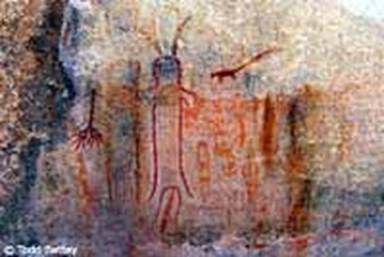Precisely the least, the softest, lightest, a lizard’s rustling, a breath, a flash, a moment – a little makes the way of the best happiness. Friedrich Nietzsche.
These are large (11-18 inches long) lizards of the American southwest – within the Sonoran and Mojave Deserts from southern California east to southern Utah and Nevada, western Arizona, and south to Baja California. It is the second largest lizard in the U.S. behind the Gila monster, and while chuckwallas have a bit of an imposing look, they are not poisonous like the Gila monster.
They are a pretty stocky looking lizard with loose skin folks on the side of their body and around the neck, with thick tails. Chuckwallas exhibit sexual dimorphism – males have reddish-pink to orange or light gray/black heads, shoulders, and limbs. Females and juveniles have scattered spots or contrasting bands of light and dark gray/yellow. The males are larger than the females and have femoral pores on the inner sides of their thighs that produce secretions thought to be used to mark territories.

Chuckwallas generally prefer lava flows or rocky areas that are often sparsely vegetated by drought-tolerant shrubs. They can be found at elevations from below sea level up to 4,500 ft. They are primarily herbivorous – feeding on leaves, fruits, and flowers of annual and perennial plants though insects are a supplementary part of their diet. Their optimum temperature regime is 100 – 105 degrees F, and they will alter their behavior, retreating to shade or underground areas when things get too hot or cold.
They will hibernate during the cooler part of the year, emerging in mid-to late February from burrows. Oftentimes they will found in rock crevices close to the surface on a warmer sunny winter day. During the summer an average of 6 eggs are laid and the hatchlings emerge in late September. If food resources are limited during a particular year they will not breed.
When threatened they will run into a rock crevice, gulp air to bloat up, and wedge themselves between the rocks. Native Americans were on to them, however, and used a long stick with a piece of sharpened stone attached to pry them out of their hiding places.

One day long ago, while traveling through the southern Nevada deserts, I came upon three Paiute Indians camping in a rocky gorge. It was late afternoon, and they were sitting around a fire cooking up a half-dozen large chuckwallas in an iron kettle. They had not taken the trouble either to behead or to skin the creatures and as I looking into the boiling pot I had only a feeling of repugnance for food… …The Indians said they would remove the skin when they ate the lizards.” E.C. Jager, Our Desert Neighbors.

he genus name, Sauromalus is a combination of the Greek words sauros – lizard, and omalus – flat. You can likely guess the derivation of the species name – obesus. The common name of chuckwalla is derived from the Shoshone word tcaxxwal or caxwal – as transcribed by the Spanish as chacahuala. Chuckwallas are in the Iguana family.
I’ve seen these critters a few times in Saline Valley and Death Valley, but was lucky to come across one recently in Arizona while out hiking along a ridge outside the town of Cave Creek. I just caught him out of the corner of my eye, sitting on a rock about 5 feet off the trail. He was already looking warmed up a 10 am, and it was about 75 degrees already. So it was unlikely I’d catch him – but you have to try, right?
I made my move and he darted into a shallow crevice just as I got hold of him. I had hold of him at the base of his tail and at the base of one of his legs but it quickly became apparent he had lodged himself between the rocks like an impacted molar. He had bloated up and was just-not-moving. A gave a couple light tugs but he didn’t budge except his tiny lizard claws scratched the rock, trying to wedge himself in further. Oh well – I had to just settle for petting him with a finger before continuing my hike.
